Karl II From Hessen-Philippsthal: Eh. Letter Philippsthal 1847 An Stepmother
Charles II from Hesse-Philippsthal: Eh. Letter Phillipsthal 1847
Description
– Wmore pictures see below! –
You are bidding on a nice one decorative letter out of Philippsthal from 1847.
With private mounted applique of paper flowers.
Written and signed by handt from Charles II of Hesse-Philippsthal (1803-1868), since 1849 Landgrave of Hesse-Philippsthal.
He was him Son of Landgrave Ernst Konstantin von Hessen-Philippsthal (1771-1849) from his first marriage to Luise (1775-1808), daughter of Prince Friedrich Carl von Schwarzburg-Rudolstadt.
Addressed to his stepmother Karoline von Hessen-Philippsthal (1793-1872) in Meiningen, daughter of Prince Karl von Hessen-Philippsthal (he addresses her as "mother" and calls himself her "son").
He mentions his wife Marie von Hessen-Philippsthal (1818-1888), daughter of Eugen II. Friedrich Karl Paul Ludwig Duke of Württemberg (1788-1857) and his little son Ernst von Hessen-Philippsthal (1846-1925), after the death of his father the last titular landgrave of Hessen-Philippsthal.
Charles II thanks for a present for his 44th birthday birthday (on 22. May 1847) and reports on the celebration.
Dated Phillipsthal, 23. May 1847.
Detailed excerpts:
"Dear mother! Today I can only briefly express my heartfelt thanks to you, dear parents, for your very nice gift and the good wishes and very kind letters that went with it [...].
The forks and knives look too pretty in her beautiful apartment, and their shine matches yesterday's day, which was spent so happily.
miss v. I would also like to say my most sincere thanks to Türcke for your kind gift and kind memory, and I wish from the bottom of my heart that her health will improve soon.
My Marie gave me a lot of presents yesterday. Again 2 superb silver bowls, a very nice case for all kinds of toilet apparatus, a lovely little hand lantern, handkerchiefs [...] A wastepaper basket and purse, from her own work [...].
Little Ernst was very sweet all day long. Very early in the morning he was brought in like a little trout, with his mouth and eyes wide open, and handed me a nice letter, stationery and a nice cup. He was very well behaved and cheerful all day long and made good conversation with the people who visited him, if he continues like this he will be a model prince.
During the dinner, the gentlemen were very cheerful and in good spirits, the dinner pompously Lucullus-like. I sent the meal ticket to dad. There was no wind and so the guns were very audible. There was no shooting during the dinner.
The confirmants did well today and the church was quite full.
With the most sincere wishes [...] I close my letter today, with many heartfelt recommendations, to father, Miss. v. Türcke, the lordships and Allen dear Meiningen and housemates, and remain your dear mother, sincerely loving son Carl."
Note: The mentioned Miss. v. Türcke was probably a daughter of the Saxony-Meiningen chamberlain Hermann Rudolf von Türcke (* 20. March 1799; † 27 October 1840).
Scope: 2 p. (21.4 x 13.5 cm).
Folded letter envelope included, sent by post, with exit stamp VACHA (L2) from 23. May 1847 and receipt stamp Meiningen from the following day. In the same format as the letter (folded: 6.3 x 10.8 cm).
Condition: Letter and envelope slightly browned and stained, somewhat creased. Please also note the pictures at the end of the item description!
Internal note: KRST 20-04-01
Pictures
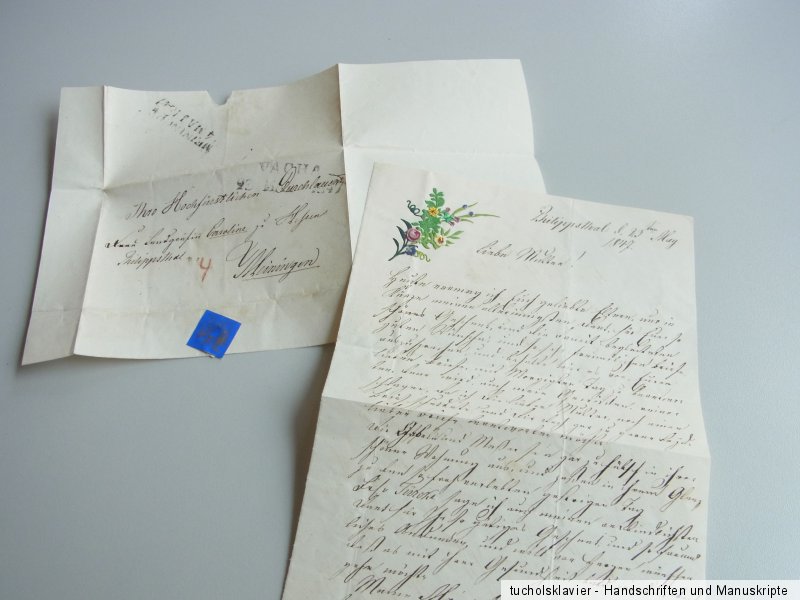
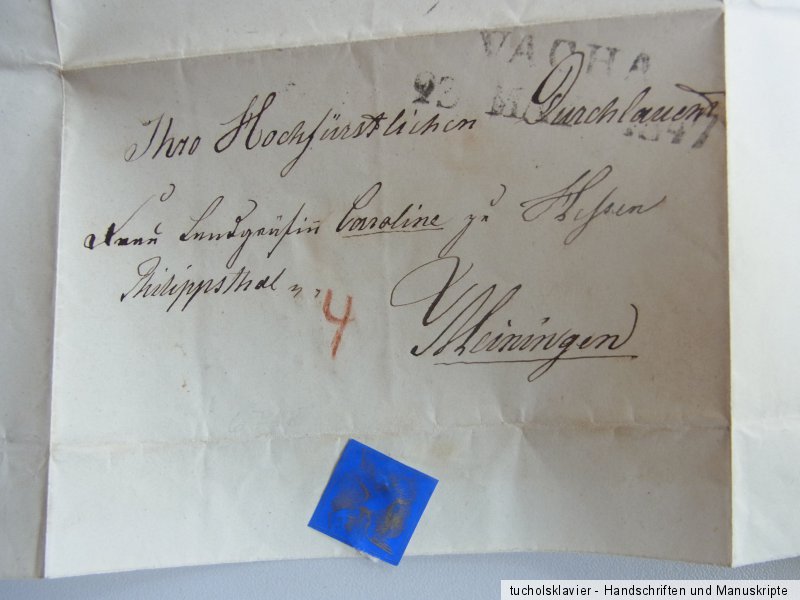



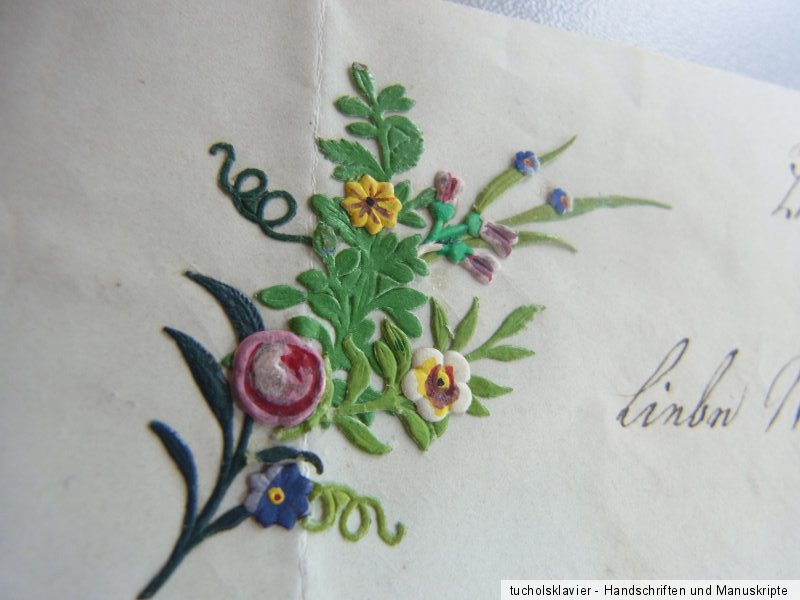

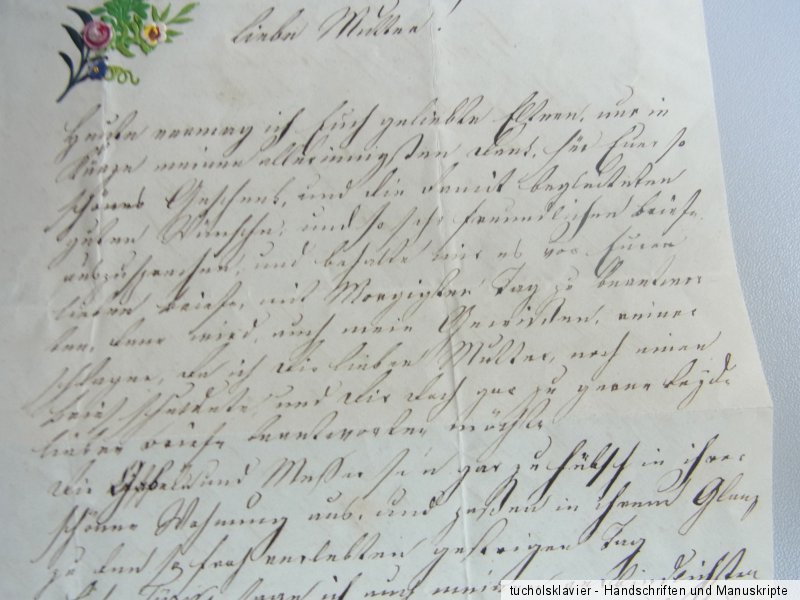
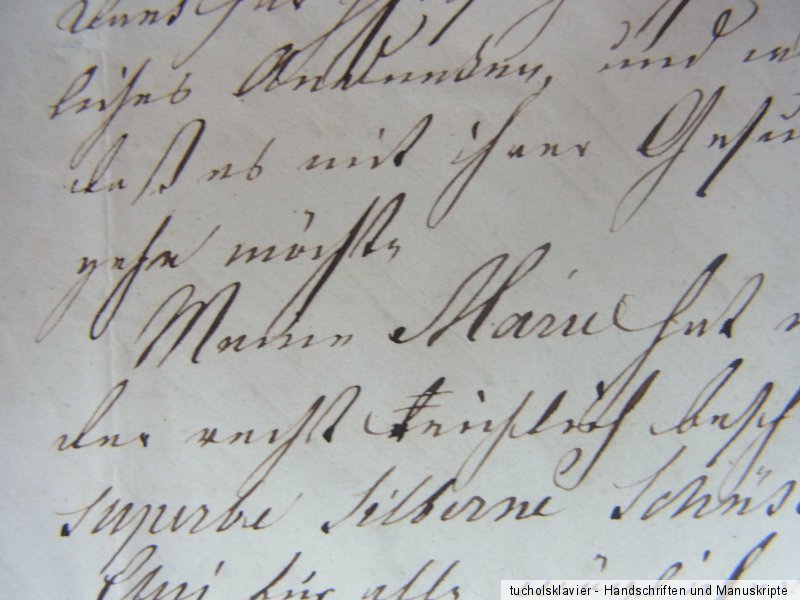
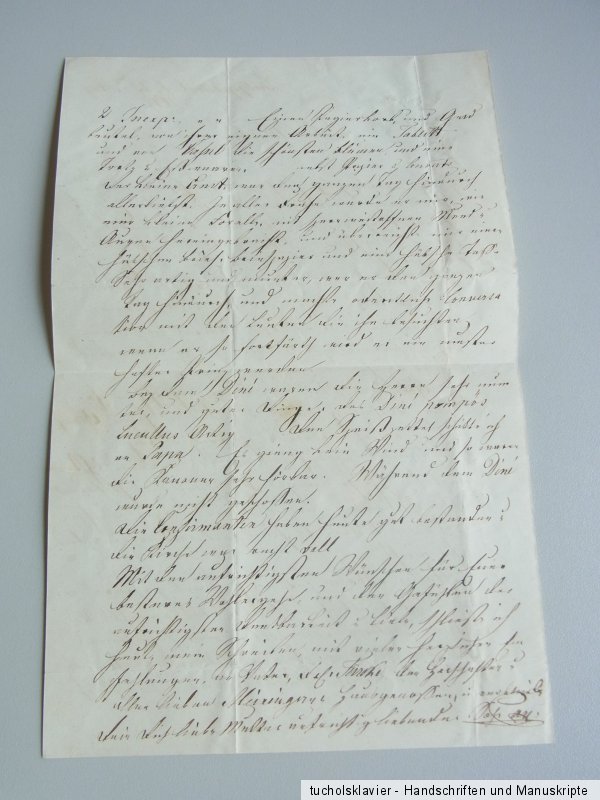
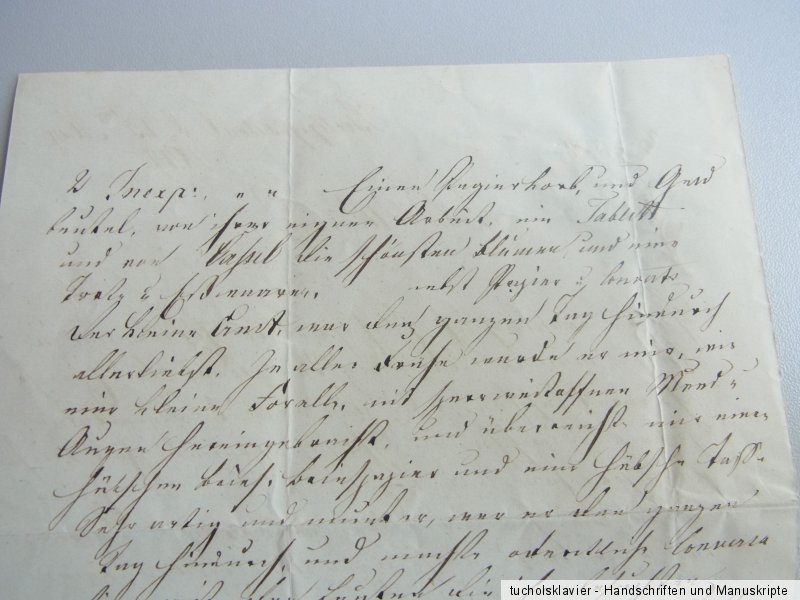
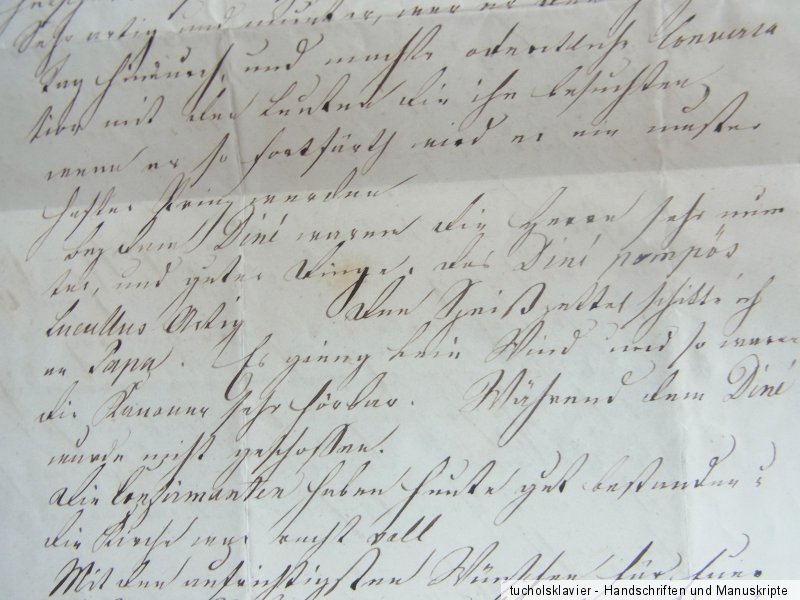
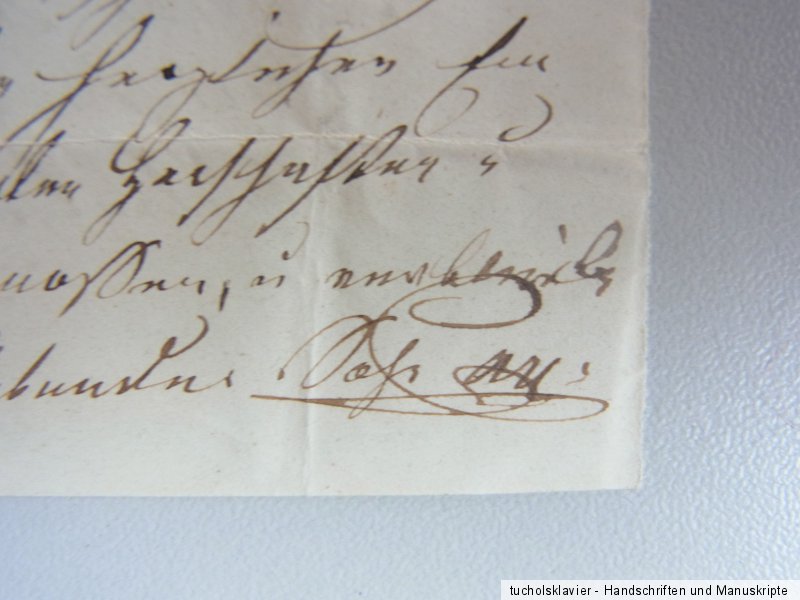
TRIXUM: Mobile-optimized auction templates and image hosting
About Charles II of Hessen-Philippsthal and the Philippsthal Castle (source: wikipedia & Hessian biography):
Charles II from Hesse-Philippsthal (* 22. May 1803 in Philippsthal; † 12 February 1868 ibid) from the House of Hesse was paramedic Landgrave of Hesse-Philippsthal.
Life: Karl was a son of the Landgrave Ernst Konstantin von Hessen-Philippsthal (1771-1849) from his marriage to Luise (1775-1808), daughter of Prince Friedrich Carl von Schwarzburg-Rudolstadt.
Karl succeeded his father as Landgrave of Hesse-Philippsthal in 1849, since his older brother Ferdinand had already died in 1839. Karl served in the army as an Electoral Major General in Hesse. In 1866 Kurhessen was annexed by Prussia with Hessen-Philippsthal and thus Karl lost his paragium.
Descendants: Karl married on 9. October 1845 in the Carlsruhe spa near Oppeln Marie (1818-1888), daughter of Duke Eugen von Württemberg, with whom he had two children:
Ernst (1846–1925), nominal Landgrave of Hesse-Philippsthal
Charles Alexander (1853-1916)
Like his older brother Ferdinand, Prince Karl began his career as an officer in the Austrian army. At the beginning of 1822 he was first a lieutenant in the Hohenzollern Chevauxlegers regiment and was transferred to the infantry in the autumn of that year. From April 1826 he was a captain in the regiment of Prince Philipp von Hessen-Homburg in Stuhlweißenburg, but in 1831 he applied for a leave of absence as a major ad honorem and was finally dismissed from Austrian service in 1836 after taking over as a major in the Electorate of Hesse. After the death of his brother in the following year, he was a candidate for his father's successor in Philippsthal, which he was to take after his death in 1849. At the beginning of 1845, the hereditary prince had resigned from active service as colonel à la suite and in the autumn of that year married the Catholic Princess Marie Alexandrine from the Silesian ducal line "Carlsruhe" of the House of Württemberg, whose mother was a Waldeckerin. From then on the couple lived in Philippsthal, where their two sons1 were also born. Landgrave Karl died of pneumonia at the beginning of 1868, in the second year after the annexation of Kurhessen and thus also Philippsthal by Prussia. His wife continued to live in Philippsthal until her death two decades later.
Philippsthal Castle lies in the lower Werra valley, in the Hessian municipality of Philippsthal. The baroque residence of the Landgraves of Hesse-Philippsthal was built by Landgrave Philipp von Hessen-Philippsthal and his son and successor Karl between 1685 and 1735 on the basis of the Hersfeld monastery in Kreuzberg, which was closed after the Reformation.
Description: The castle has three wings grouped around a trapezoidal courtyard. The courtyard narrows to the east and is open in that direction.
The west wing is about 120 meters long and delimits the palace complex to the west of the old town centre. Among other things, the Landgrave's library was housed here. Today the community library is located in these rooms. In the middle of this two-storey (further south also three-storey) wing there is a representative gate made of sandstone, with the coat of arms of the Landgraviate Hessen-Kassel in the gable.
The north wing runs in a southeasterly direction, along Schloßstraße, towards the archway house. This wing burned down in 1976. A new wing was then built on its foundation walls in order to preserve the character of the three-wing complex. There are now several retail shops and a nursing home.
The arched house in the east was the representative main entrance to the castle, since only about 1.5 kilometers upstream, over the old Werra bridge Vacha, the busy Via Regia trade route between Frankfurt and Leipzig led past. The arched house with its mansard roof was built in 1734. An information point for the border customs service was located here until 1998. After that, the border museum was housed here.
The main building was the three-storey south wing. The town hall of the market town of Philippsthal is located here today. The building runs about 50 meters to the east, where it leans against the northern aisle of the former monastery church. The wing was created from the bower, the provost's house, which was extended to the east in an architecturally adapted manner. As early as 1590, the southern aisle was separated from the church and used as a storage room for the farm, which managed the monastery's property from around 1560, when the last nuns had left the monastery. This separated aisle was then converted into representative rooms during the time the palace was being built. Among other things, there were also two rooms for the royal family, which could follow the service in the church from here.
The monastery church originally had a west work with two flanking towers. However, it is not certain whether the two towers ever stood in full height. Both towers, with a square base, were shortened to the height of the castle building and serve as stairwells or Connection between the south wing and the rooms on the south side of the church. Since then, the church has had a central steeple to the west. In 1733, the original main entrance to the west was walled up because the family crypt was built below the church tower in that year. Katharine Christine von Sachsen-Eisenach (1699-1743), wife of Landgrave Karl I von Hessen-Philippsthal (1682-1770), was buried here in 1743 as the first landgravine of the Philippsthal line.
The trapezoidal castle courtyard has an area of about 4000 m². Beyond the southern wing of the palace After the church, the castle park stretches down to the Werra. It has an area of about 50,000 m² and is almost completely surrounded by a man-high sandstone wall. In the upper part, by the chateau, it is a French-style ornamental and kitchen garden. The lower part extends from the orangery built in 1731 to the Werra. This area is designed in the shape of an English landscaped garden. Until 1905 the park continued on the other side of the Werra; however, this park area was leveled due to the construction of the Ulster Valley Railway
| Erscheinungsort | Philippsthal |
| Region | Europa |
| Material | Papier |
| Sprache | Deutsch |
| Autor | Karl II. von Hessen-Philippsthal |
| Original/Faksimile | Original |
| Genre | Geschichte |
| Eigenschaften | Erstausgabe |
| Eigenschaften | Signiert |
| Erscheinungsjahr | 1847 |
| Produktart | Handgeschriebenes Manuskript |